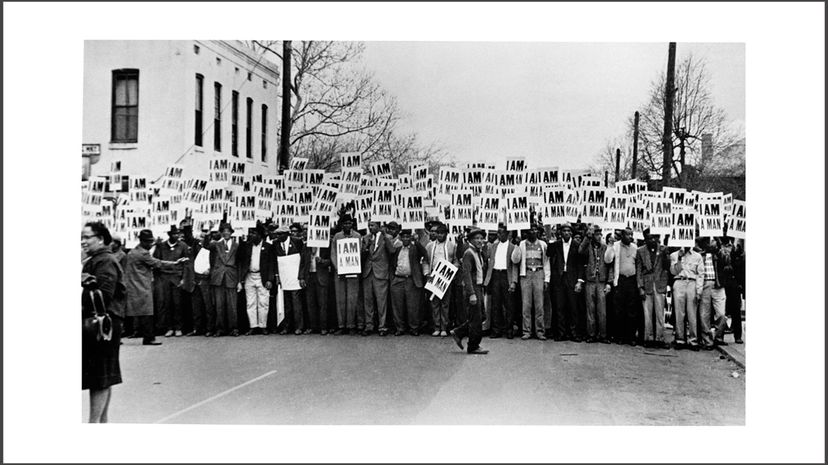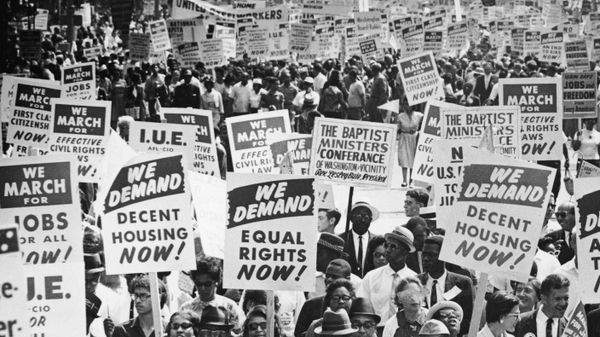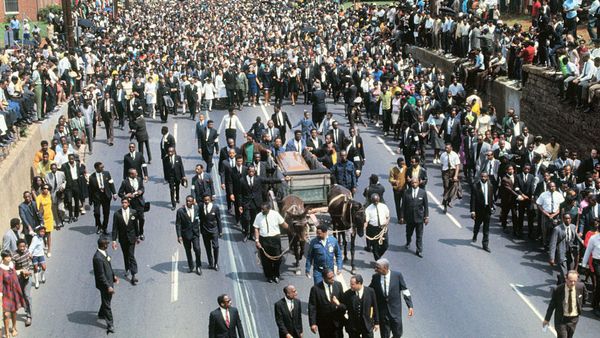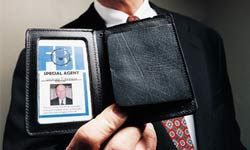
Ernest Withers might not be the best-known name of the civil rights movement, but he was the best-known photographer. As a photojournalist, Withers captured incredible images of key moments in American history. From the iconic image ofEmmett Till'smutilated corpse to the now-legendary shot of sanitation workers standing shoulder to shoulder in Memphis, Tennesse carrying signs that read, "I Am a Man," Withers' photos spread awareness about the injustice of black America.
But his legacy got a little more complicated in 2010.The Commercial Appealnewspaper, which covers Memphis, discovered Withers essentially lived a double life, having worked as a paid informant for theFBIfor years. Was he a traitor to thecivil rights movementhe so eloquently photographed or is there more to his story?
Advertisement
Ernest Withers took photography lessons in the U.S. Army while he served during World War II in the Pacific Theater. After the war, he worked as a beat cop on Beale Street in his hometown of Memphis as one of the first black police officers. Thanks to that beat, he was able to photograph some of the soon-to-be-legends in music history, from B.B. King and Aretha Franklin to Ike and Tina Turner.
Withers was prominentin the civil rights movement, too. He was the only photographer to document the entire Emmett Till murder trial, and he captured Dr. Martin Luther King Jr. and Ralph David Abernathy riding the first desegregated bus in Montgomery, Alabama. He also photographed the "Little Rock Nine" at Central High School in Arkansas in 1957 afterBrown v. Board of Educationoutlawed segregation in public schools. Other noteworthy things in history he captured include the Montgomery Bus Boycott, Medgar Evers' funeral, theBlack Panther Partyand the Lorraine Motel after MLK's assassination.
After Withers died in 2007 from a stroke, Commercial Appeal reporter Marc Perrusquia startedworking on Withers' biographyfor the paper. That's when a former FBI agent told him that they never bothered to bug King's meetings because they had Withers. But he refused to tell Perrusquia more. So the reporter spent years investigating the story, petitioning the FBI withFreedom of Information Actrequests to discover the truth of this informant, until, after a lengthy lawsuit, many of Withers' classified records were released. That's when Perrusquia finally determined that Withers, in fact,worked as an informantfor the FBI throughout the 1960s.
Why the FBI was monitoring the movements of civil rights activists isn't totally clear, but history has shown that then-FBI director J. Edgar Hoover believedKing was influenced by communists.18新利最新登入然而,威瑟斯的动机并不理解; some think he was in it for the money — to support his family of eight children — though it is possible that he had some anti-communist feelings himself, since several of his sons fought in the Vietnam War.
He also had a history of corruption. He lost his job as a police officer for bootlegging whiskey, though Perrusquia points out that at the time, the Memphis police department was rampant with corruption. In 1981, though, Withers was also caught up in acash-for-clemency scandalwith a Tennessee judge, where criminals were basically able to buy their way out of prison. Withers testified against the judge, having cut a deal with the state. But even with the stakes that high, he never revealed his work for the FBI.
Since the news about Withers being an informant broke in 2010,it's been receivedwith mixed feelings. Some civil rights leaders felt that they were betrayed and their confidence abused. Others, like Ambassador Andrew Young, who was a lieutenant of MLK,告诉《纽约客》that he's not surprised because at the time they felt the FBI bugged everything, but they didn't suspect Withers himself.
“It’s important to remember the time within which he lived, and the inordinate pressure to inform,” Dr. Manning Marable, a professor of African American studies at Columbia University,告诉《纽约客》.“The best thing we can say about Withers is that he played a dual role, as an informant who undoubtedly disrupted the movement, but also as a photographer who used his talents on behalf of advocacy, social justice, and equality.”
Advertisement
Originally Published: Apr 24, 2018





